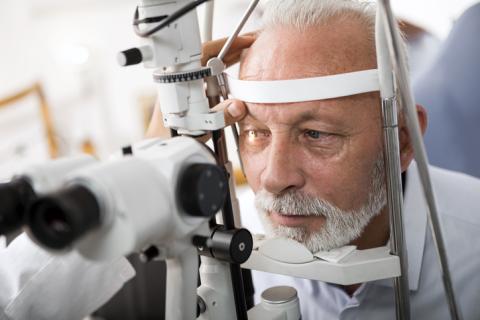Avoiding Glaucoma, the “Sneak Thief of Sight”
Glaucoma happens when the normal fluid in the front of our eye doesn’t drain properly, leading to pressure that can damage our optic nerve. The GRF explains that this nerve “acts like an electric cable with over a million wires. It is responsible for carrying images from the eye to the brain.”
It’s important to know that anyone can have glaucoma—even babies. But the risk increases as we grow older. The risk is also higher among people of African or Hispanic heritage, and in people with type 2 diabetes or high blood pressure. A family history of the disease also raises the risk.
Sometimes glaucoma comes on quickly, with blurred vision, severe pain and redness of the eye, headache, and nausea. This type, called angle-closure glaucoma, is a serious medical emergency, and a person with these symptoms should seek treatment right away.
However, the most common type of glaucoma by far, called open-angle glaucoma, typically has no warning signs. The only way to detect it before vision is damaged is with a comprehensive eye exam. The exam is painless.
If glaucoma has already damaged the optic nerve, the resulting vision loss cannot be reversed. But prompt treatment can slow or prevent any further damage. Treatment may include medications (oral and/or eye drops), laser surgery, conventional surgery, and lifestyle changes such as maintaining a healthy weight, keeping blood pressure under control, and giving up smoking.
Following your doctor’s recommendations, reporting medication side effects and having regular eye exams are the best ways to protect your vision for years to come. For more information, see consumer resources offered by the Glaucoma Research Foundation (www.glaucoma.org).
